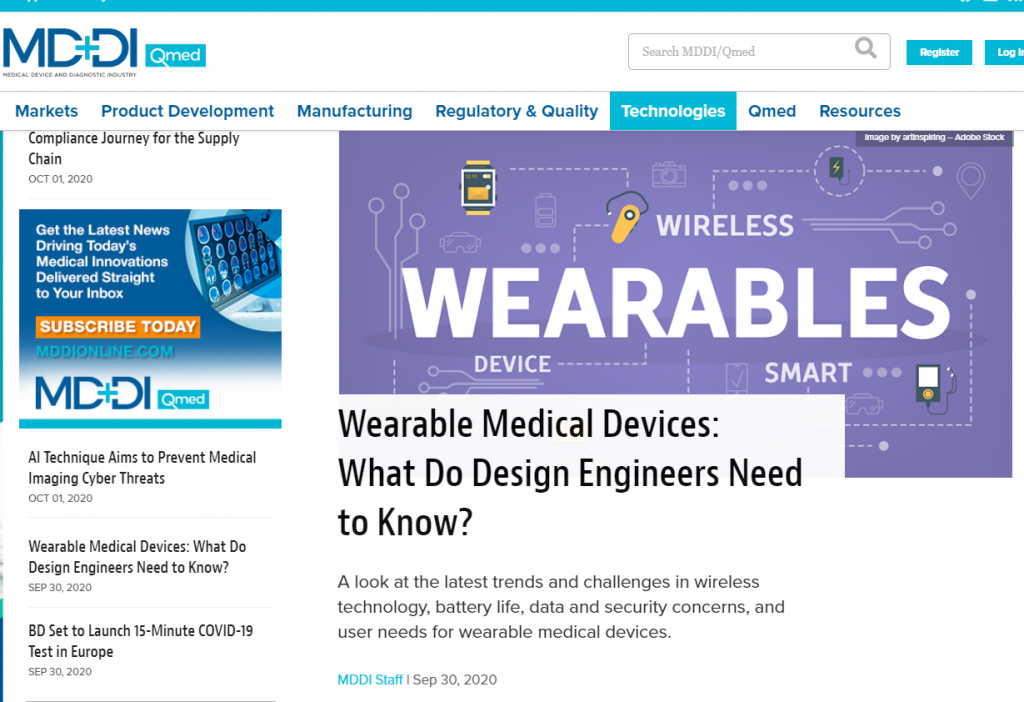Medical Devices: What Do Design Engineers Need to Know? in the Technology section of their September 30, 2020 online issue. Subtitled “A look at the latest trends and challenges in wireless technology, battery life, data and security concerns, and user needs for wearable medical devices”. the article features StarFish Medical engineer team answers to a series of questions posed by MD+DI staff.
Interest in wearable health technology continues to rise significantly, according to many reports. Health and fitness monitoring continue to drive demand, and emerging needs such as diagnostics, remote patient monitoring, home healthcare, and drug delivery could add to such interest. To help medtech product designers meet these needs and more,
The StarFish engineers were: Kenneth MacCallum, principal physicist; James Jackson, principal industrial designer; and Nigel Syrotuck, mechanical engineering team lead. Also contributing are John Turner, software manager; and Ash Luft, embedded software engineer.
The questions include:
- How has wearable medical device usage increased in the last five years?
- How will fitness monitoring shape the global wearable medical devices industry?
- How can diabetes care applications challenge the wearable medical device industry?
- How are current wearables adhering to customer needs and wants?
- What technology has made the biggest leap for wearable medical devices?
- How have body-friendly technologies changed wearable medical devices?
If you were creating a wearable device, what would you raise as key considerations and why?
Fitting a wearable onto a user is always a huge thing. And that’s not just the size of the wrist, but how hairy their arm is and how loose their skin hangs. What impact will the wearable have on their day-to-day life that may cause them to either use it, or not use it, or use it improperly?
On projects that have a wearable aspect, those are the big challenges we have to get through. We can leverage a lot of the wireless communication from consumer electronics. But to make it fit onto a person, into a person’s life, and interface with them in a way that makes it, is going to continue to be a big challenge.
Read the rest of the answers to this question and the article here.
